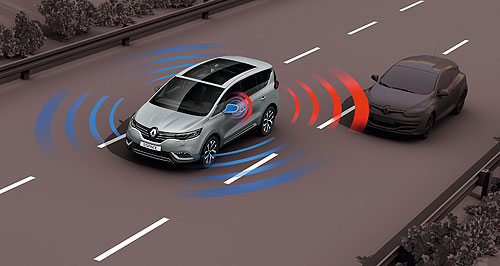UN clearance required for automated cars
BY IAN PORTER | 15th May 2015

Australia and a majority of European countries are among the 73 signatories to the Vienna Convention on Road Traffic of 1968, which is explicit about the role of a driver in a vehicle.
Speaking at the Australian Intelligent Transport Systems (ITS) Summit in Melbourne this week, Renault director of corporate strategy and planning Christian Rousseau signaled a change of two conventions before further progress can be made.
“Some countries have signed the Vienna Convention and some have signed the Geneva Convention of 1949 and both will have to be changed,” he said.
The Vienna Convention was organised by the United Nations and superseded and absorbed the earlier Geneva Convention on Road Traffic.
“The convention says the driver must always be involved in the driving task. The only person responsible is the driver,” Mr Rousseau said.
The requirement for the driver to remain engaged in the driving function means that, while there can still be some automated functions like automatic emergency braking, the driver is unable to make alternate use of the time spent in the car.
Mr Rousseau said Renault and its sister company Nissan are aiming to develop automated vehicles by 2020 that would not only enhance safety on the roads but would also allow the driver to engage in secondary tasks.
“Now, when you are in congestion, you can see the other drivers playing with their smartphones or reading newspapers. In a non-automated car that is very dangerous.
“With the automation of the driving task, under very heavy traffic conditions, we’d allow much more safely the driver to do something else. But the driver is still following the queue.
“Instead of losing all the control of the car because of the secondary activities, the system allows safer behavior of the driver and car system.” Renault expects to have a partly automated vehicle ready by about 2020, Mr Rousseau said. He said this would be more than a Level 2 automated car but not quite Level 3.
The levels of vehicle automation start at Level 1, where a vehicle has independent automated systems such as cruise control. Level 2 has at least two automated control systems working in unison, as in emergency braking (range sensing and braking).
At Level 3 a driver would be able to cede control of all safety-critical functions under certain conditions, such as staying in a lane at highway speeds or creeping in a traffic jam, but be able to regain control with sufficient transition time.
Level 4 is full self-driving automation.
“We are aiming at 2 Plus or 3 Minus, it’s a matter of definition.
“Maybe our premium-car colleagues can achieve (Level 3) by 2020, but for a generalist car manufacturer we will be later.” Sister company Nissan has been talking up its autonomous tech development for a number of years now, and has even collaborated with NASA on certain projects.
But last year the car-maker confirmed its future self-driving cars would differ from pilots such as Google’s driverless vehicles in that a driver would always remain in control.